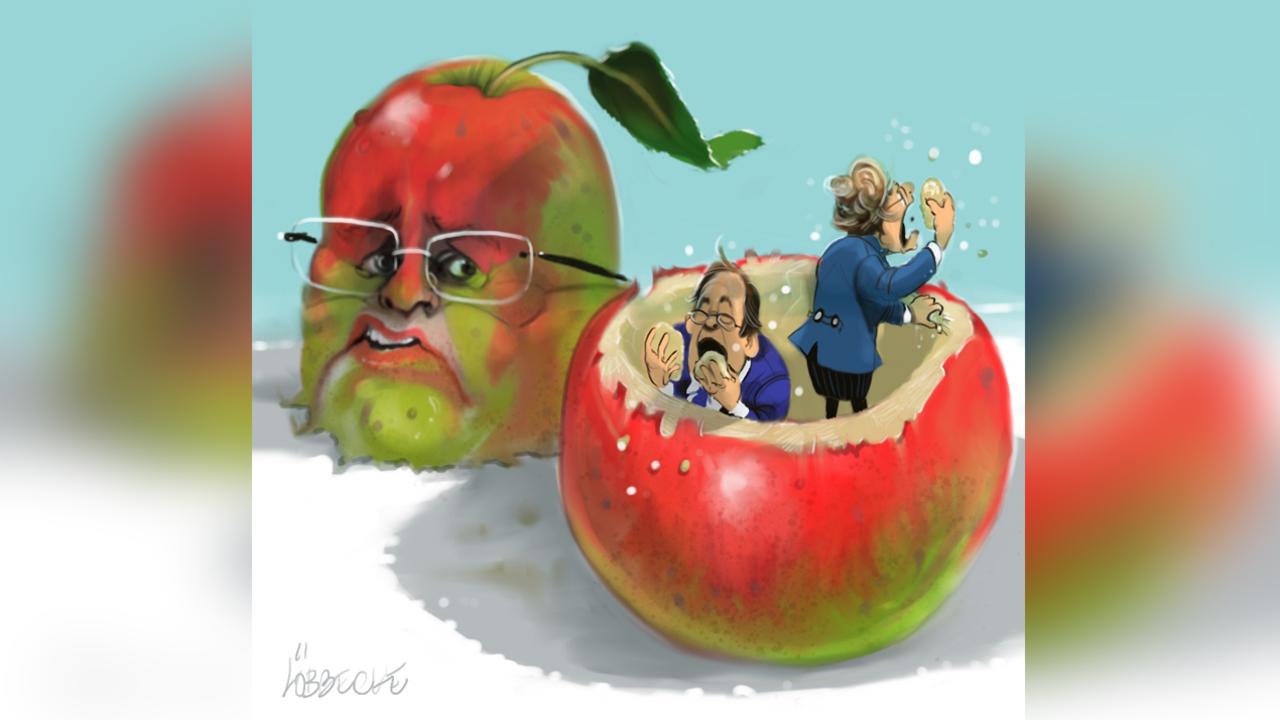"HERE'S the rub," Julia Gillard told the nation's mining executives at last week's Minerals Council annual dinner; "you don't own the minerals". But she carefully omitted to say precisely who does. For she knows full well the commonwealth no more owns those minerals than it owns the moon.
Rather, until a mining lease is granted, they are owned by the states. And the Constitution prohibits one level of government taxing assets owned by another. Minerals taxation has therefore long been considered a matter for the states, with royalties being their chosen taxing instrument.
But the Henry report changed that. It argued royalties were among the most inefficient of taxes, and should be replaced by a better-designed commonwealth alternative. So it was with Ken Henry by his side that Kevin Rudd, on the day of the Henry report's public release, announced the resource super-profits tax.
Nor did that Henry report finding vanish, as so many others did, into the night and fog following Rudd's demise.
Rather, Julia Gillard and Wayne Swan have repeatedly relied on it as justifying their attempts to increase commonwealth taxes at the states' expense.
That is hardly surprising. But what is surprising is that the report's estimates of the costs of royalties were so readily accepted, for they were never especially plausible. What has now become apparent is that they are seriously flawed.
The problems are analysed in a paper Jonathan Pincus and I are presenting to next month's Australian Conference of Economists. The paper asks a simple question: is it possible to derive from the material the Henry review released an estimate of the cost of royalties that even vaguely approaches the levels of inefficiency the report claimed? The answer to that question is no.
First, a few basics. Taxes cause people to change behaviour, giving rise to efficiency losses. The losses depend on the degree to which behaviour is altered relative to that which would otherwise prevail; they also depend on what happens in the economy as a whole when those behavioural changes occur.
The overall outcome is captured in a measure referred to as the "excess burden" of taxation. Essentially, it reflects the loss in national income when a tax is imposed: to say a tax has an average excess burden (AEB) of 20 per cent means that on average, each $1 transferred from taxpayers to the government makes taxpayers $1.20 worse off.
In other words, taxpayers forgo $1.20 of income for the government to pocket $1, so the 20c taxpayers lose, but the government does not receive, is the tax's excess burden. Our tax system's excess burden as a whole is usually taken to be 20 to 30 per cent.
As part of its work for the Henry report, Treasury commissioned a study that analysed the excess burden of royalties and other taxes. That study estimated royalties' AEB as 50 per cent: royalties cost the economy 50c for each dollar of revenue, making them our second most inefficient major tax, after gambling taxes.
But that AEB is startlingly high. After all, there is an exception to the rule that taxes distort behaviour -- taxes on rents, where rents are payments in excess of those required for a good to be made available. As those taxes merely transfer excess returns from the supplier to the government, they leave output unchanged and distort no decisions. The study itself argues that rents are a substantial component of mining companies' earnings. If so, one would expect royalties to at least partly fall on rents, lowering their AEB.
And indeed, the study's own estimates point to an AEB far below 50 per cent. Specifically, the study concludes royalties reduce mining output by 7.5 per cent. One can use that estimate to calculate royalties' AEB abstracting from interaction effects in the economy as a whole. That calculation is referred to as a partial equilibrium estimate, as compared with the general equilibrium estimate obtained when economy-wide impacts are factored in.
Going on conventional assumptions, the partial equilibrium AEB corresponding to the estimated output fall is 3.75 per cent, far below 50 per cent. Almost the entirety of royalties' claimed 50 per cent AEB must consequently be due to the way the economy adjusts to the 7.5 per cent fall in mining output.
As far as indirect effects go, that is a hell of a splash from a relatively small pebble. One would therefore expect a close reconciliation of the partial equilibrium AEB of 3.75 per cent with the ultimate, general equilibrium, AEB of 50 per cent. No such luck.
The report does detail the ultimate incidence of the taxes it examines, that is, their consequences for incomes. As a matter of principle, however, each tax's excess burden should equal the difference between the revenue gain to the government and the loss of private income, accounting for the fact that some of that loss is merely a transfer of rents. But applying that equation to the report's data on royalties does not give an AEB of 50 per cent: rather, it suggests royalties actually increase income by 3.4 per cent, that is, have a negative excess burden.
The difference arises because the reported reduction in non-rent private incomes falls short of that needed for a 50 per cent AEB by nearly $2 billion.
It seems remarkable that that $2bn shortfall was not picked up when the estimates were reviewed by Treasury.
Of course, it may be the gap can be explained, for example, by the specific way the model calculates economy-wide impacts. But if so, the explanation should have been properly set out.
And one would expect sensitivity testing to have been presented, especially as some of the modelling assumptions are likely to result in AEB estimates that are unduly high. Yet again, no such luck.
As for reverse engineering the results from the model, forget
it. For as with Treasury's carbon tax analysis, and unlike what
is done by the Productivity Commission, the model itself has not been put in the public domain, so the results cannot be independently replicated.
Finally, to add insult to injury, the study does not actually model the excess burden of the commonwealth taxes that are said to be a less distorting alternative to state government royalties.
Rather, contrary to theory and evidence, it simply assumes, on the basis of Treasury instructions, that their excess burden is zero, with that zero then being treated, in the Henry report, as if it were a demonstrated fact.
The entire discussion of mining taxes has therefore been premised on claims that are questionable in themselves and seriously lacking in transparency.
State governments should refuse to proceed on that basis. Before discussions of mining taxation go any further, they should demand the full release of the model and of the inputs required to reproduce the report's estimates.
And that's the rub: with our most important industry squarely in this government's sights, "trust me, I'm Julia Gillard" can hardly be considered explanation enough.



